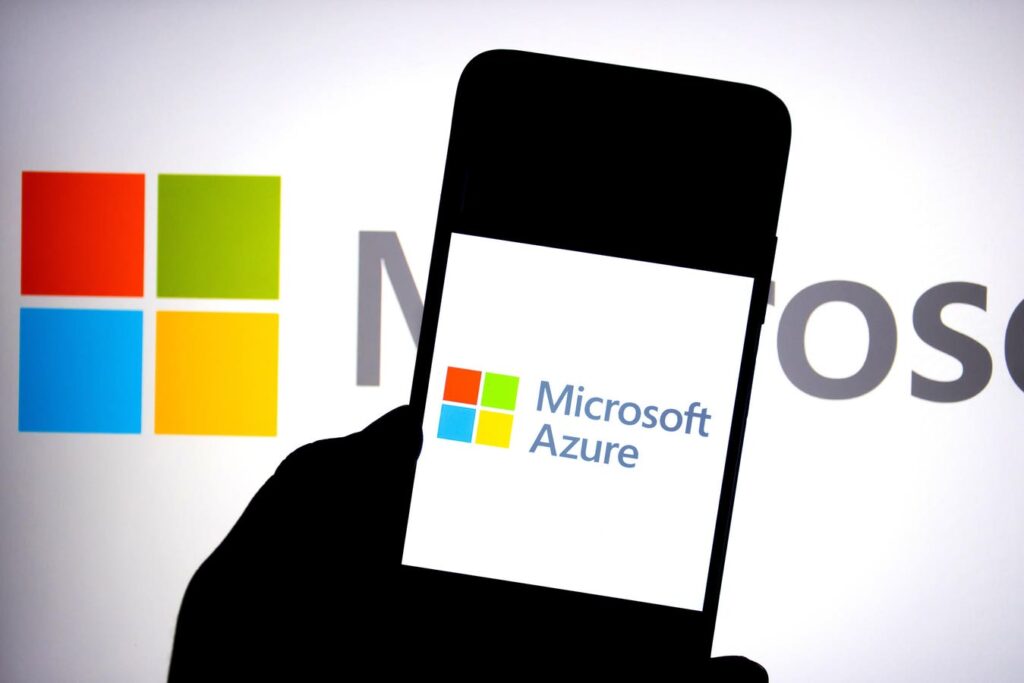The current period presents concerns for broader markets, which inevitably create challenges for Microsoft (NASDAQ:MSFT). Growing economic anxieties in the United States, fueled by the implementation of tariffs and an escalating trade war, are fostering a generally unfavorable market climate. While Microsoft’s stock has not been immune, declining from nearly $450 in January to around $370, its drop has been less severe than some other tech stocks. This relative resilience can be attributed to Microsoft’s limited exposure to China (reportedly low-single-digits contribution to sales) and its focus on the software and cloud side of its business, offering some insulation from global trade tensions. Separately see – ASML Stock To $400?
The question now is whether to buy MSFT stock at $370. We think so. Our positive outlook is based on a comprehensive analysis comparing Microsoft’s current valuation against its recent operating performance, as well as its present and historical financial standing. This assessment, which considers key parameters such as Growth, Profitability, Financial Stability, and Downturn Resilience, reveals that Microsoft possesses a very strong operating performance and a robust financial condition, as will be detailed further. That said, if you seek upside with lower volatility than individual stocks, the Trefis High-Quality portfolio presents an alternative – having outperformed the S&P 500 and generated returns exceeding 91% since its inception.
How Does Microsoft’s Valuation Look vs. The S&P 500?
Going by what you pay per dollar of sales or profit, MSFT stock looks expensive compared to the broader market.
- Microsoft has a price-to-sales (P/S) ratio of 11.0 vs. a figure of 2.8 for the S&P 500
- It has a price-to-earnings (P/E) ratio of 30 vs. the benchmark’s 22
How Have Microsoft’s Revenues Grown Over Recent Years?
Microsoft’s Revenues have seen notable growth over recent years.
- Microsoft has seen its top line grow at an average rate of 12.3% over the last 3 years (vs. increase of 6.2% for S&P 500)
- Its revenues have grown 15.0% from $228 Bil to $262 Bil in the last 12 months (vs. growth of 5.3% for S&P 500)
- Also, its quarterly revenues grew 12.3% to $70 Bil in the most recent quarter from $62 Bil a year ago (vs. 4.9% improvement for S&P 500)
How Profitable Is Microsoft?
Microsoft’s profit margins are considerably higher than most companies in the Trefis coverage universe.
- Microsoft’s Operating Income over the last four quarters was $118 Bil, which represents a considerably high Operating Margin of 45.0% (vs. 13.1% for S&P 500)
Does Microsoft Look Financially Stable?
Microsoft’s balance sheet looks very strong.
- Microsoft’s Debt figure was $62 Bil at the end of the most recent quarter, while its market capitalization is $2.8 Tril (as of 4/16/2025). This implies a very strong Debt-to-Equity Ratio of 2.2% (vs. 21.5% for S&P 500). [Note: A lower Debt-to-Equity Ratio is desirable]
- Cash (including cash equivalents) makes up $72 Bil of the $534 Bil in Total Assets for Microsoft. This yields a strong Cash-to-Assets Ratio of 13.4% (vs. 15.0% for S&P 500)
How Resilient Is MSFT Stock During A Downturn?
MSFT stock has seen an impact that was slightly better than the benchmark S&P 500 index during some of the recent downturns. Worried about the impact of a market crash on MSFT stock? Our dashboard How Low Can Microsoft Stock Go In A Market Crash? has a detailed analysis of how the stock performed during and after previous market crashes.
Inflation Shock (2022)
- MSFT stock fell 36.3% from a high of $336.32 on 1 January 2022 to $214.25 on 3 November 2022, vs. a peak-to-trough decline of 25.4% for the S&P 500
- The stock fully recovered to its pre-Crisis peak by 14 June 2023
- Since then, the stock has increased to a high of $467.56 on 7 July 2024 and currently trades at around $370
Covid Pandemic (2020)
- MSFT stock fell 28.2% from a high of $188.70 on 10 February 2020 to $135.42 on 16 March 2020, vs. a peak-to-trough decline of 33.9% for the S&P 500
- The stock fully recovered to its pre-Crisis peak by 9 June 2020
Global Financial Crisis (2008)
- MSFT stock fell 59.1% from a high of $37.06 on 1 November 2007 to $15.15 on 9 March 2009, vs. a peak-to-trough decline of 56.8% for the S&P 500
- The stock fully recovered to its pre-Crisis peak by 6 November 2013
Putting All The Pieces Together: What It Means For MSFT Stock
In summary, Microsoft’s performance across the parameters detailed above are as follows:
- Growth: Very Strong
- Profitability: Extremely Strong
- Financial Stability: Extremely Strong
- Downturn Resilience: Neutral
- Overall: Very Strong
Given Microsoft’s very strong performance across key parameters, the stock presents an attractive investment opportunity. While its valuation may appear high when compared to the broader market, Microsoft’s current trailing price-to-earnings (P/E) ratio of 30x is actually lower than its three-year average of 33x. Coupled with the continued robust growth expected from its cloud offerings, Microsoft appears to be a compelling buying opportunity for long-term investors at the current levels. Although near-term volatility related to ongoing tariffs does pose a risk, for investors with a time horizon of 3 to 5 years, we believe MSFT is a sound stock to buy.
Not too happy about the volatile nature of MSFT stock? The Trefis High Quality (HQ) Portfolio, with a collection of 30 stocks, has a track record of comfortably outperforming the S&P 500 over the last 4-year period. Why is that? As a group, HQ Portfolio stocks provided better returns with less risk versus the benchmark index; less of a roller-coaster ride as evident in HQ Portfolio performance metrics.
Invest with Trefis
Market Beating Portfolios | Rules-Based Wealth
Read the full article here


